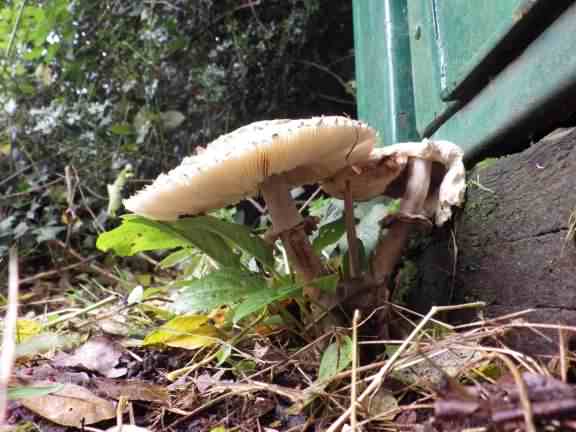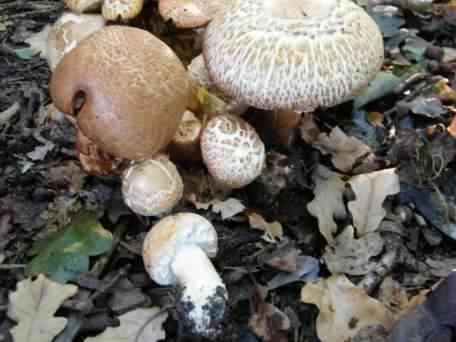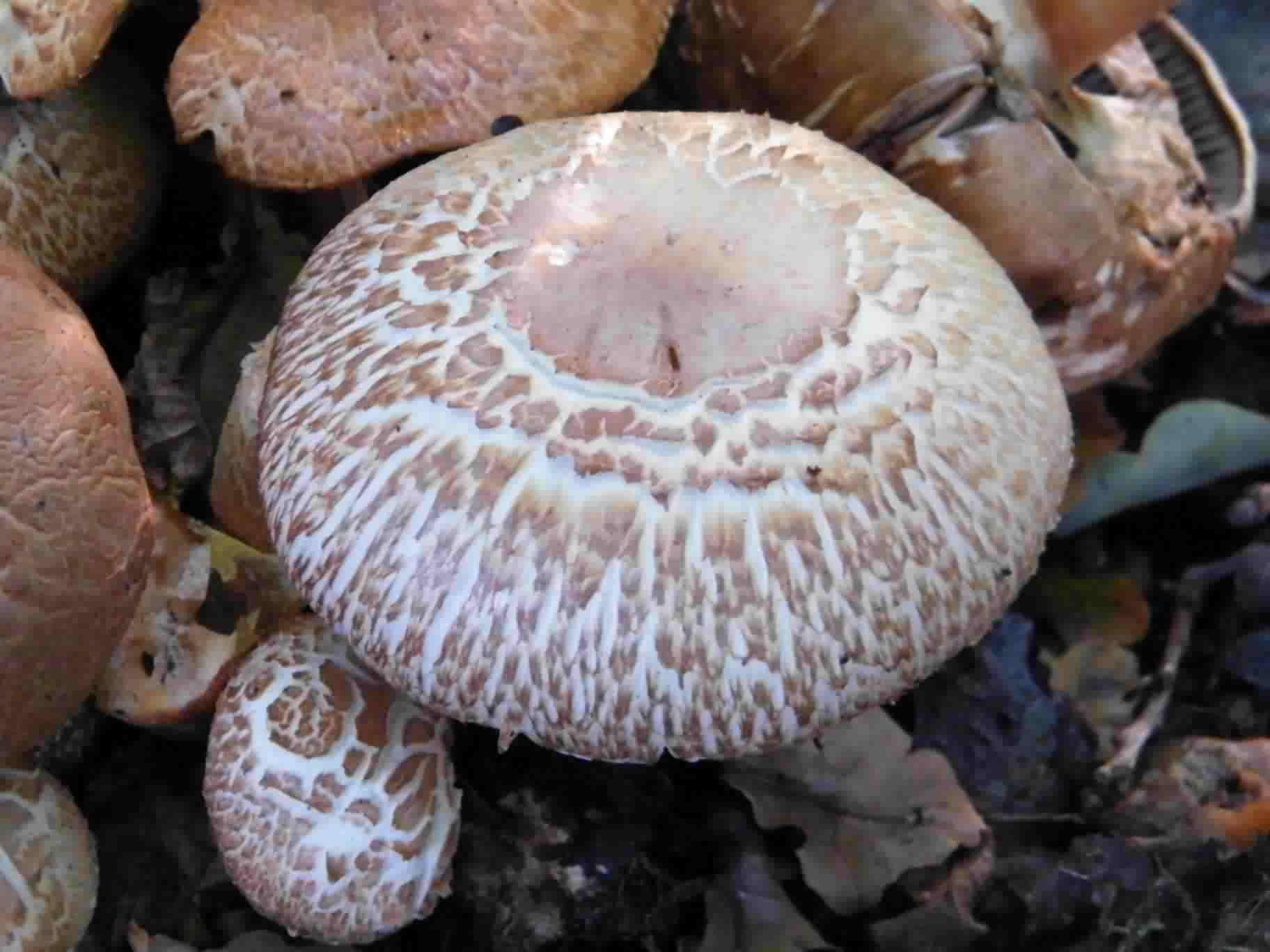
Photo ©2020–
Click for a larger image
More photos
Photo ©2020–
Click for a larger image
Shaggy Parasol - Chlorophyllum rhacodes
Family - Agaricaceae
Formerly - Macrolepiota rhacodes or Lepiota rhacodes
This plant is toxic
Renamed from Macrolepiota rhacodes, the "Shaggy Parasol" is the common name for three closely related fungus species, Chlorophyllum rhacodes, C. olivieri and C. brunneum. Supposedly an edible mushroom (see below), it is a large and conspicuous agaric, white to cream growing to 20cm (8in) diameter with a distinctive brown scaly cap during the summer. Grows as a creamy white sub–spherical bulb shaped protuberance 40–60mm (1.6–2.4in) across in rich soil and compost, gradually going brown and then erupting into a distinctive mushroom shaped fungi with brown scales from the erupted surface. It is found in North America, Europe and Southern Africa growing beside woods and hedges, C. brunneum is also found in Australia. Gills are white to cream giving a white spore print.
BCP do not advise or recommend that Shaggy Parasol – Chlorophyllum rhacodes is eaten or used as an herbal remedy. Popularly stated to be a good edible mushroom The Shaggy Parasol contains toxins which may cause stomach upsets in some people especially when eaten raw or undercooked, with some showing a strong allergic response even after cooking. Furthermore, young shaggy parasols look identical to the larger and poisonous False Parasol or Green Spored Parasol – Chlorophyllum molybdites, rare in the UK, which grows to around 40cm (16in) in diameter.
 |
 |
 |
| Click any photo for a larger image - Photos ©2010– | ||
Site design ©1999– Brickfields Country Park - Privacy -